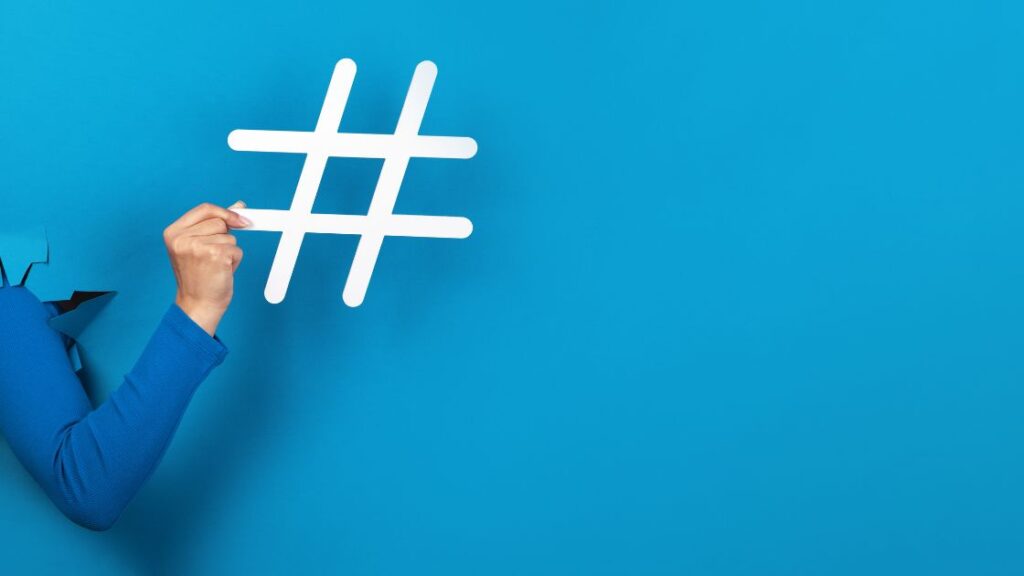Welcome to my third post of the Motivational May Series. In this post, I will tell you how to grow a Twitter account from scratch. What to do and what not to do and how to get the right kind of audience. I will also share tips given by Writing Community Mum – Emma Lombard in the interview for which she was kind enough to take time out.
I am pretty sure there are tons of other ways where you can just buy followers or benefit from following for following threads, but why I will never recommend them is because of bots (explained later in the post) and non-compatible followers which are just a waste of time money and energy. To it right, so you can actually benefit from it and get organic traffic to your website that is genuinely interested in what you have to offer you need to build it up slowly and gradually from the scratch. How to do that is what I will be discussing in this post.
How to Create a Professional Twitter Profile?

- Use your logo or a headshot as your avi (display image/profile picture) to look more professional.
- If this is not your business account, add what you do in your user name. For example “Sam| The Food Blogger”. That way, if someone searches for food bloggers in your area, your profile is sure to pop up in the search results.
- Keep your bio very professional and straightforward, or you can choose to be humorous if humor is your strong suit and that is the way you plan to conduct your account.
- Use the banner picture to tell more about you as a picture is worth thousand words.
- It would be great if you can get verified by Twitter as this will build more trust and authority for your account.
- Link your Twitter account to the socials bar on your website.
How to create great tweets?

- Create engaging content. Twitter gives you a limited word count to get your point across so be very sensible and smart in using that word count. Your aim is to gain maximum engagement.
- Add some emojis to make your tweet more eye-catchy so it can stand out in tons of others.
- Use attractive images to complement your content. Images always grab more attention. It will be even better if you use a gif or a short video.
How to use Hashtags?

- Use appropriate and relevant hashtags for getting maximum reach. Every industry has different popular hashtags that can help you reach the right audience. For example, if I am trying to reach fellow authors I use #WritingCommunity but if I wish to reach fellow bloggers I use #BloggersTribe or #Bloggerswanted.
- Using trending hashtags can increase your reach. Look into them, they will also give you an idea of what people are interested in talking about on that particular day.
- Unlike Instagram using too many hashtags can actually decrease your reach. The optimal or recommended number of hashtags is from two to five.
- Make maximum use out of hashtags like #ff (follow Friday) for shout outs. If you will give a shout-out to people they are likely to return the favor and offer you better exposure.
Best Time To Tweet

- You should come up with a set schedule to tweet. For this, you need to figure out what timings work best for you, and how frequently it is appropriate for you to tweet?
- People may find it annoying if you tweet too frequently especially if your content is not of their interest. So if you are tweeting too often you might be unfollowed by some of your followers.
- To schedule your posts you can use Buffer, Hootsuite, or IFTTT as per your preference. They can also help you figure out the best timings that work for you. You can also use Twitter analytics to figure out which part of the world your audience is mostly from and schedule your post accordingly using your common sense.
- If all fails trial and error method will always be there for you to figure things out.
How to use Twitter analytics?
Twitter analytics is great because it shares tons of information with you about the performance of your tweets, your audience and your account activity overall. You can use this information for the following purposes.
- Analyze the demographics of your audience to understand their interests and create your content accordingly.
- See what time your tweets are performing best and schedule your post with that information in mind.
- Notice what type of content is getting you the most audience and what hashtags are working best for you.
How to Engage on Twitter?
- Be the person you are in real life (unless you are a really nasty person in real life then maybe you should pretend to be Emma Watson). Authenticity is very important.
- Engage with your targeted audience (I cannot stress this enough), comment on their tweets, and retweet (RT) any content you genuinely like.
- Thank anyone who RT your tweet. You can also RT your own tweet to get more impressions (reach).
- Pin your best performing tweets at the top of your profile to make a great first impression.
How to Bring in Followers from other platforms?
- You can share your tweets on your Facebook page or ask your Facebook followers to join you on Twitter.
- Use Hallo Bar to direct your website visitors towards your Twitter account and convert them to your Twitter followers so that even if you are not subscribing to your website they can learn about anything new about your brand from your Twitter account.
What to Avoid on Twitter?
- Follow-for-follow practice is frowned upon and will not get you any quality audience for your business or blog. You can follow back with anyone you feel compatibility otherwise you are not obligated to follow back.
- Follow–unfollow apps are not recommended as they can get you blocked or suspended.
- Do not force yourself into other people’s DMs (Direct Messages).
- Look out for bots (auto-generated profiles created to scam and troll people), avoid and block them immediately.
Emma Lombard, historical author from Australia. She is super nice, friendly, and very helpful, so much so that she is referred to as Writing Community Mum and she enjoys the title. Emma’s debut novel is currently with her editor and she will be querying agents in the second half of 2019. Inspiration for her historical naval fiction novel came from her grandmother who told her a bit of juicy family gossip about how her three-times great grandmother eloped with an English sea captain when she was just 16!
Link to all her social media accounts:
Twitter: @LombardEmma
Author website: emmalombardauthor.com
Blog: https://www.emmalombardauthor.com/blog/categories/authorly-advice
Please do check out her blog posts for some awesome twitter tips
Q: 1: Please tell us about your blog and blogging goals?
My blog is primarily to help new writers like me navigate the early stages of a writing career by sharing what works and what doesn’t work based on my experience, including how to figure out the fickle beast that is Twitter! I also have some interesting photo blogs of ship museums I have visited or would like to visit, in the name of research for my naval fiction novel. Plus, I have a book and an audiobook review section on my blog.
I soon hope to add an Interviews & Podcasts page to my blog, including interviews with folks in the publishing industry, to hopefully give my readers the ins and outs of traditional and self-publishing. It will also include any interviews and podcasts in which I’ve participated.
Q: 2: What inspired you to be the Writing Community Mum?
When I first ventured out into the Twitterverse, I was frankly quite terrified. Having witnessed how quickly a situation can turn toxic on social media over the years, I really didn’t want to involve myself in this world. But a huge part of being an author is putting yourself out there and social media plays a big role in that these days.
So, after taking a few deep gulps, I opened Twitter one day (I’d had a dormant account since 2010) and decided to follow a couple of authors I knew. Almost instantly, I tripped across Steven Viner (@StevenViner1) who had put a call out for folks in the #WritingCommunity to connect with one another. I jumped aboard and I’ve not looked back. Then, I spent many months fumbling my way around Twitter and feeling very insecure and unsure about what to do – or more importantly, what NOT to do. I didn’t want to step on any Twitter toes.
When I realized that there were so many other people in the same boat as me, I decided to start posting Twitter Tips threads that garnered a lot of thanks and praise for helping those who were still learning Twitter. I ended up with so many Twitter threads that I decided to put them all together as my first blog, TWITTER TIPS FOR NEWBIES, to document all I had learned (up to that point) about navigating Twitter. It turned out to be a big hit with folks, as has my follow-up blog, MORE TWITTER TIPS FOR NEWBIES. I am planning on publishing EVEN MORE TWITTER TIPS FOR NEWBIES in the very near future.
One of my wonderful followers named me the Writing Community Mum because of the help I offered newbies(I’m kicking myself that I never took note of who that lovely lady was!) All I did was stick a hashtag in front of this title and off I went!
Q: 3: What does being the #WritingCommunityMum mean to you?
I very quickly found myself in a position where lovely folks were suddenly coming to me for tips and advice – how to navigate Twitter, how to deal with sticky conversations on their feed, what to do with trolls in their comments, how to approach people who they’d beta read for, how to gain more followers.
This prompted me to put my experiences in my blogs so that I had a source I could point folks towards when they had questions. As the number of my followers grew, the same sort of questions started popping up. It was super time-consuming to answer the same question over and over, so a helpful blog to point people to, made it a lot easier.
I’m not proclaiming to be an expert in Twitter or in human relations or in the publishing industry, which is why I’m quite comfy with being the #WritingCommunityMum – I have a little more knowledge than some folks and a whole lot less knowledge than others. What I do have to share is my own experience. Sometimes, all folks need to know is that they are not on their journey alone and that there are others out there experiencing the same challenges.
One thing I do like to do as the #WritingCommunityMum is to boost those who have fewer than 1000 followers. I don’t do this to encourage folks to play the numbers game. I do it because Twitter doesn’t seem to give any traction to the posts of those with fewer than 1000 followers. Again, this came from my personal experience, as well as from a litany of cries for help in the Twitterverse as to why no one was replying to posts. I found that once I tipped over the 1000 mark, I suddenly started popping up on people’s feeds and they began interacting with me more.
Q: 4: Do you ever feel overwhelmed by the writing community and how do you keep yourself motivated towards your goal?
One area that is a huge job for me is screening my new followers before deciding if we’re compatible and whether to follow them back. I don’t blind follow (I made that rookie mistake in the beginning). But just recently, I’ve been so blessed that the number of new followers I have is blowing out quicker than I can keep up with my screening and following-back process.
I feel terribly guilty for not following folks back but I just can’t keep up with it and keep on top of all my other life responsibilities. So, I’m adapting my follow-back philosophy to do a quick screen for bots – they’re so easy to spot – and block them instantly. For everyone else who’s a real person, if they interact with me on my feed and I see that they are following me, I screen them for compatibility and if we’re a good fit, I follow back.
This new process keeps me supporting and following new folks back while not being overwhelmed with screening so many followers. I realize this is a very fortunate position to find myself in and I can only thank the lovely peeps in the #WritingCommunity for making this happen.
Q: 5: How essential is it for new writers to gain a following on social media?
Hoo boy! This is a loaded question with so many varying opinions, including from agents and publishers! From my understanding, it is essential to have a decent social media following if you are planning to self-publish or if you are going down the traditional publishing route with non-fiction. It’s important to have that wide reach for marketing these kinds of books.
The jury is still out in my court whether it is essential to have a large following if you’re planning to be a traditionally published fiction author – some agents say you do, some say you don’t. I think folks need to do what they are happy and comfortable with. Not everyone is comfortable with having thousands of followers because they don’t feel they can connect with that many people, while others feel it’s important to have that broader base to work with when it comes to their marketing strategies.
However, I will add that I’ve not yet seen a hard-sell marketing campaign on Twitter succeed in any sales; but I have seen dozens and dozens of books bought by folks who have a relationship with authors. The key factor, whether you have 100 followers or 100,000 followers, is positive engagement and interaction, which is integral for building those relationships.
Q: 6: Is Twitter the most important platform? If yes, why?
Like many things in the publishing industry, this is a subjective question. I personally prefer Twitter for my author platform because of the strength and camaraderie of the #WritingCommunity. I have Facebook but it’s private and for a tiny handful of friends and family only. I do have Instagram too but that’s only so I can stalk my teenagers online (once a Mum, always a Mum! And yes, my teens know this is why I have Instagram).
Plus, the amount of time I spend maintaining my Twitter account, my author website, and my blog is staggering. I couldn’t possibly fit any more social media into my writing career at this stage – there are still books to write!
Q: 7: What are the top three things-to-do and top three things-not-to-do you would like to share with those trying to grow their Twitter account?
DO:
- Like, retweet and comment on others’ posts, even if you’re not yet brave enough to put your own posts up. This is the first and easiest step to engagement.
- If you Tweet a post and it gets no response, try these two things:
- Retweet your post (you don’t need to re-write it) at another time of day to figure out when Twitter is most active in your region
- Tag a couple of your good Twitter friends in the post and ASK them to retweet it (certainly, if you’re still below the 1000 follower mark)
- Be kind and supportive of other writers out there. We all know what a lonely and tough job being a writer can be. Celebrate people’s successes, commiserate their rejections, comment on their writing – if you love it, tell them!
DON’T:
- Don’t blindly follow people without screening them for compatibility or else you’ll end up with a feed full of content you aren’t comfortable or happy to see. You’ll also end up with followers who may turn toxic in your comments because of a clash of opinions or beliefs.
- Don’t be divisive or deliberately mean in someone’s feed just to provoke them. If you don’t like what you see, you can always:
- ignore and scroll past the post
- unfollow that person
- mute that person, or
- block that person
- Don’t spam new followers’ DMs (direct messages) with a hard sell of your book – this is a massive turnoff for folks and you will likely get yourself immediately unfollowed, if not blocked.
Q: 8: Are there any guide books about Twitter that you think gives the right approach and you would recommend to those interested?
I’ve not read any guide books but I’m sure there are plenty out there – I’ve seen a Twitter for Dummies floating around. Instead, I research blogs and online marketing advice. Twitter is an evolving platform, so I figured that reading the most up-to-date news about its functions as well as advice from those in the know-how best to use the platform is the way to go.
I have looked at so many how-to Twitter websites! Interestingly, I found some marketing websites better and easier to understand than Twitter’s help site. The best sites for me are the ones with pictures or videos that show you how Twitter’s functions work. Bless all those guys and gals who know how to record this info and upload it for the rest of us!
I still don’t know everything – recently one of my followers explained that highlighting the bell symbol on a person’s profile means that Twitter will ensure their posts come up on your feed! I thought it was to notify me whenever this person posted something on Twitter – I’d been scratching my head why I hadn’t received any notifications!
Q: 9: Do you believe everyone can become ‘Master of Twitter’ if they want to?
Sure – if they want to. There are a million tricks to Twitter including automating a lot of it. At this stage, I personally prefer to send my tweets out manually because it helps keep me connected on a more personal level with people. There are dozens of analytical apps and follower apps that can help you understand the trends of your account. I have only just begun using the Social Guide app – primarily to nab those rascally number-farmers who like to follow then immediately unfollow. This app makes it easy to find them, especially when you have loads of followers.
I know it is many people’s desire to have a large following but it takes a lot of maintenance and upkeep to screen followers, post meaningful and useful content, as well as get rid of bots and trolls. It’s important for me to block bots and trolls not only because they harass me but harass my followers too. I feel a sense of responsibility to ensure that neither bots nor trolls occupy any space in my Twitterverse.
Mastering Twitter will look different to folks, depending on why they are using the platform. Unfortunately, learning the ins and outs of technology is something we techno-newbies all have to go through if we want to play in the land of social media.
Q: 10: What message do you want to give to those writers who want to generate a following on social media?
Genuinely engaging with people online (aka, your potential readers) takes time and energy but if you are planning on building a supportive following, you need to put the work in – it’s like anything in life really. If you are just in it for the numbers, most people will spot you from a mile away and you won’t always earn their follow – I believe you earn your true followers through engagement. Having thousands of empty followers isn’t going to help you sell any books or have people read your poetry or sign up for your blog.
You also need to pick your brand – how you want people to see you. Stephen King gets away with being very political online. He no doubts cops flack for it but it’s how he rolls – he has 5.2 million followers on Twitter. Diana Gabaldon (Outlander series) doesn’t use Twitter but she’s very active on Facebook and engages with fans almost daily. She shares a lot about her family, fan interactions, and research, plus she posts delicious excerpts from her upcoming book – she has nearly 700k followers.
I fell comfortably into my niche as #WritingCommunityMum as it closely fits who I am in real life. I’ve been a Mum and a volunteer in many roles for nearly all of my adult life. My earliest childhood memory of me in ‘protective helper mode’ is from my first running race at primary school, when I was 7-years-old. I wasn’t winning the race but I wasn’t losing either. I realized that the girl who was coming last began crying because she realized she was going to lose the race.
Without even thinking about it, I stopped just before the finish line and let her cross before me so that she wouldn’t be the one to come last. It didn’t bother me that I lost the race. It was more important to me that she didn’t lose the race because it meant so much to her.
I’m not on social media to compete with other writers, I’m here to share in their journey and share mine with them. By lifting other writers up in the #WritingCommunity, I have been lifted and supported and loved tenfold by so many wonderful folks.
That’s my two cent’s worth. Here’s what the publishing pros have to say about building your social media platform as a writer:
- A great Twitter thread from Megan Manzano (@Megan_Manzano), YA Editor & Book Blogger – Agent Apprentice @CorvisieroLit – 1/5 of@WriteCraftQuest and #Pitchwars Mentor: tips and tricks to help build your social media platform
- A one-hour-long vlog from @CraftWriteQuest– A collective of #editors supporting writers on their publishingadventure@Maria_Tureaud@SouffleLumiere@Megan_Manzano@Justine_Manzano: Social Media Dos and Don’ts for Writers








